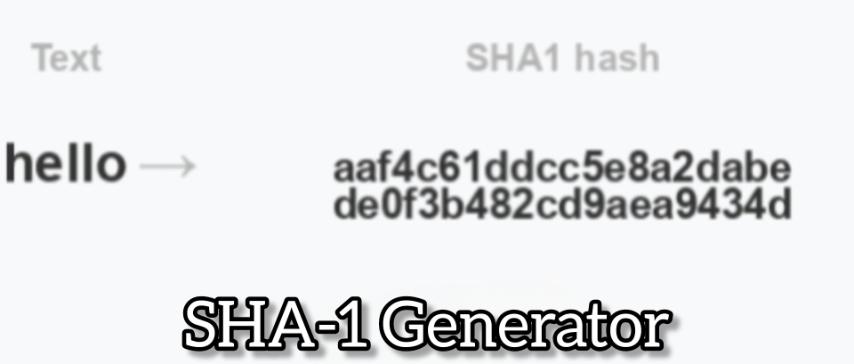
Understanding the Power of SHA-1 Generator for Secure Hashing
Created on 3 October, 2025 • Generator Tools • 18 views • 2 minutes read
The SHA-1 generator played an important role in shaping the world of cryptography and data integrity.
What is SHA-1 Generator?
A SHA-1 generator is a tool or algorithm designed to create a fixed-length hash value from any input data, such as text, passwords, or files. SHA stands for Secure Hash Algorithm, and the number "1" refers to the first version of this cryptographic hashing method, developed by the U.S. National Security Agency (NSA) in 1993. The SHA-1 algorithm produces a 160-bit (20-byte) hash value, usually represented as a 40-digit hexadecimal string.
In simpler terms, no matter how large or small the input is, the SHA-1 generator always delivers the same length of output. This makes it extremely useful for digital signatures, data integrity checks, and password storage systems.
How Does SHA-1 Work?
SHA-1 works by processing data in fixed-size blocks. It breaks down an input into 512-bit blocks, then applies a series of bitwise operations, logical functions, and modular additions. The result is a unique SHA-1 hash output that is nearly impossible to reverse.
For example:
- Input: “Hello World”
- Output:
2ef7bde608ce5404e97d5f042f95f89f1c232871
Even the slightest change in the input, such as changing “Hello World” to “hello world,” generates a completely different hash. This property is known as the avalanche effect, ensuring high levels of data uniqueness.
Key Uses of SHA-1 Generator
Although SHA-1 has been largely replaced by newer algorithms such as SHA-256 due to security vulnerabilities, it is still in use for some legacy systems. Common applications include:
1. File Integrity Verification
When downloading software or large files, developers often provide a SHA-1 checksum. Users can run a SHA-1 generator to verify the downloaded file matches the original and hasn’t been tampered with.
2. Password Storage
SHA-1 has been used to store hashed versions of passwords in databases. While more secure hashing algorithms are now recommended, SHA-1 hashing still appears in older authentication systems.
3. Digital Signatures and Certificates
SHA-1 was once widely used in SSL/TLS certificates for website security and digital signatures. However, most modern browsers and certificate authorities no longer support SHA-1 due to known weaknesses.
Limitations of SHA-1
While SHA-1 was groundbreaking in the 1990s, advancements in computational power revealed vulnerabilities. Attackers can perform collision attacks, where two different inputs produce the same hash. This significantly reduces the trustworthiness of SHA-1 in high-security applications.
Because of these limitations, experts recommend migrating to SHA-2 or SHA-3 for stronger protection against brute force and collision attacks.
Why Still Use a SHA-1 Generator Today?
Despite its drawbacks, SHA-1 is still valuable in:
- Learning cryptography basics.
- Working with older systems that haven’t upgraded.
- Checking legacy file integrity.
For developers, a SHA-1 generator can also serve as an educational tool to understand how hashing works before moving on to more advanced algorithms.
Conclusion
The SHA-1 generator played an important role in shaping the world of cryptography and data integrity. While modern security standards have moved beyond SHA-1, it remains an essential part of digital history and continues to serve niche purposes. For stronger security in today’s digital environment, transitioning to SHA-256 or higher is highly recommended.